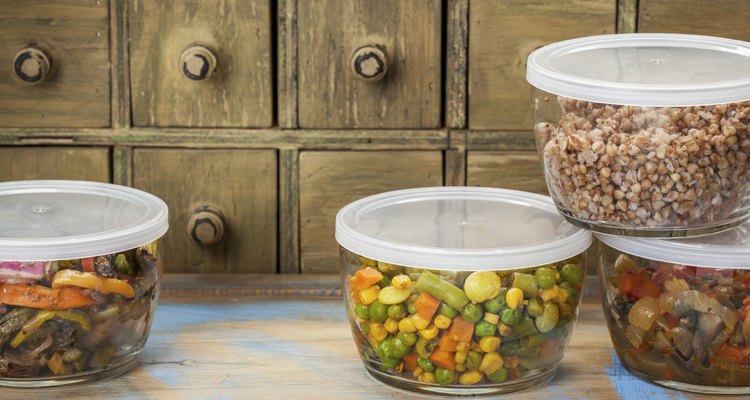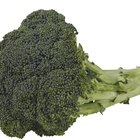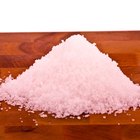
marekuliasz/iStock/Getty Images
While buying foods in bulk can be cost-effective, cooking foods in bulk can be a great time-saving technique. Vegetables might not be your first choice of food to cook ahead of time, however, you can do so effectively -- as long as you’re careful about the reheating process.
Bacteria
Some vegetables are contaminated with bacteria when you purchase them from the store or market. From the farm to the market, fresh vegetables go through several different stages of processing -- including harvesting, cleaning, packaging and shipping. When cooked properly, the high temperatures can kill this bacteria and prevent it from harming your health. To eliminate dangerous bacteria during the reheating process, cook the vegetables to an internal temperature of at least 165 degrees Fahrenheit. Be sure to stir the vegetables several times during the reheating process to ensure even cooking.
Canned Vegetables
Canned vegetables are a great option for stocking your pantry, as they have a tremendously long shelf life. However, the canning process can be a bit volatile. If the processing time was too short or the temperature was too low, the botulism toxin could develop. Although these toxins aren’t produced during the reheating process, improper reheating will not kill the toxin. To ensure safety when re-heating your canned vegetables, simmer them for at least 12 to 15 minutes before eating.
Plastic
For the most part, reheating vegetables will not produce toxins. However, using a plastic container or plastic wrap to reheat your vegetables can be more dangerous. The Body Ecology website acknowledges that plastic often contains dangerous toxins that can leach into your food in the microwave. To be safe, reheat your vegetables in microwave-safe glass or ceramic dishes.
Vegetable Oil Study
In 2005, the University of Minnesota issued a press release regarding a recent study done by University of Minnesota professor A. Saari Csallany and graduate student Christine Seppanen. The research study found that re-heating vegetable oil to high temperatures of at least 365 degrees Fahrenheit significantly increases the production of a highly toxic compound. The toxins continue to accumulate each time the oil is re-heated. This compound, 4-hydroxy-trans-2-nonemal, forms when linoleic acid oxidates during the heating process. The toxic compound has been linked to Alzheimer’s, atherosclerosis, Huntington’s disease, liver disease, Parkinson’s and stroke.
Related Articles

What Are the Dangers of Sauerkraut?
Essential Amino Acids That Are ...

What Vegetables Have Citric Acid?

What Foods Provide Calcium D-Glucarate?

Leaving Cooked Vegetables Unrefrigerated

How to Wash Wax Off of Vegetables

Are the Nutrients Lost in Slow Cooking?

The Steps in Cooking Raw Foods in a ...

How to Steam Vegetables in an Electric ...

How to Sterilize Safety Goggles

Slow Cookers & Nutrition

How Does Flash Pasteurization Work?

Can You Freeze Canned Goods?

How Long Can Frozen Food Sit Out Before ...

How to Blanch, Peel, & Freeze Whole ...
Can We Refreeze Frozen Vegetables?
Can You Freeze Shish Kabobs?

How to Use Sea Salt for Canning

Is It Safe to Cook Vegetables in ...

How to Preserve Rutabagas
References
- cdKitchen: Cooking in a Flash: How to Reheat Food Without Overcooking It
- Utah State University: Food Safety and the Microwave
- National Center for Home Food Preservation: Frequently Asked Freezing Questions
- University of Minnesota: Food Fried In Vegetable Oil May Contain Toxic Compound
- Help With Cooking: Refrigeration Tips
- Body Ecology: The Dangers of Microwave Ovens Everyone Needs to Know
Writer Bio
Krista Sheehan is a registered nurse and professional writer. She works in a neonatal intensive care unit (NICU) and her previous nursing experience includes geriatrics, pulmonary disorders and home health care. Her professional writing works focus mainly on the subjects of physical health, fitness, nutrition and positive lifestyle changes.
Photo Credits
marekuliasz/iStock/Getty Images